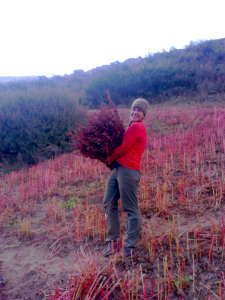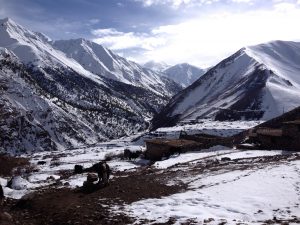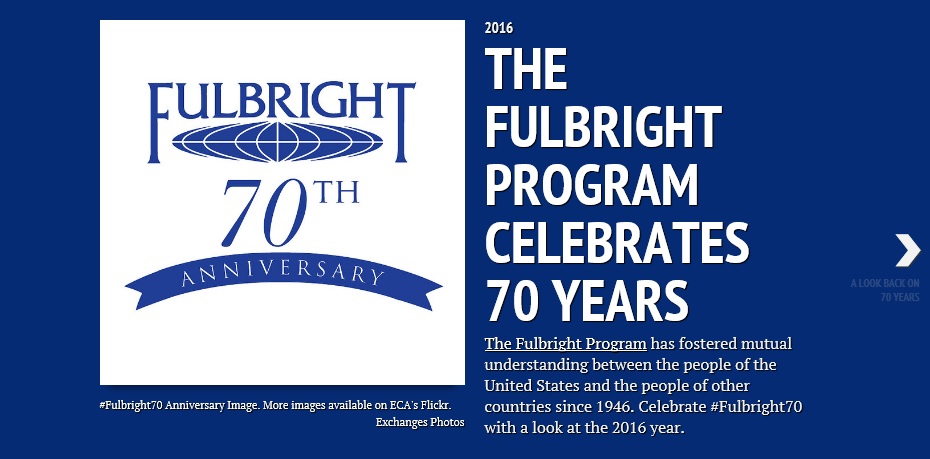
Michelle Grocke, 2014-2015, Nepal, harvesting bitter buckwheat crops between September and October. While at first she had to beg her host family to help, after a few days, every family in the village wanted her assistance as they quickly realized she was actually quite helpful!
For my Fulbright U.S. Student grant, I travelled to an area of Nepal that many locals and scholars alike call “the most remote district of Nepal.” Nestled high in the Himalaya, the villages in Humla District lie between 9,000 – 12,500 feet, and are not connected to the rest of the country by any roads. Humla is both ethnically and linguistically split as Nepali-speaking Hindus live in the south, while Tibetan-speaking Buddhists live in the north. The traditional diet of the ethnic Tibetans in Humla consists of local grains such as barley and buckwheat, a few roots and tubers such as the potato and daikon radish, and a high volume of yak butter tea. Given their nutrient-dense diet, Humlis have never suffered from diet-related disease such as diabetes and hypertension.
All of this is changing. The first “dirt” road in Humla is currently under construction, and is providing easy access to a market in China (formerly Tibet) where Humlis are now purchasing enriched, processed foods such as ramen noodles, white flour, and soda. The goal of my research was to assess how this new market access is impacting villagers’ health, specifically in terms of their food security, diet and nutrition, and subjective well-being.
Always accompanied by my local research assistant, who now has become like a younger brother to me, I walked five days from the District capital to reach my first field site village.

To get anywhere during her Fulbright grant, Michelle would walk, often times joining families and their animals that were travelling to either purchase food at the market or to visit family in another village.
Being a medical anthropologist, the foundation of my data collection was ethnography, a field-based method that involved me both observing and participating in everyday tasks. Over the course of ten months, I helped harvest crops, grinded seed into flour, cooked meals, picked up goods via horseback from the local market, and helped raise the animals, among other things.
Although I first felt quite alone, it was amazing how with every day that passed I felt more like I was surrounded not by strangers, but by family. As I was learning Humli ways of food procurement, ethnobotanical methods of curing illness and disease, and how to eat with the seasons, locals often asked me why I did certain things like eat the skin of the potato, mix salt with water when I felt run-down and tired, and only use a fraction of the sodium-rich ramen noodle powder. As I gained rapport with villages, each day become a sharing of cultural knowledge and ideas surrounding food consumption, nutrition, and the numerous uses of local plants.

Being high in the Himalayas, winters were often below freezing with snowstorms that would last days. Although these times were difficult, they provided Michelle with an opportunity to interview locals and spend time asking them questions.
Not only did I learn the trials and tribulations of conducting research independently, my Fulbright experience taught me the simultaneous value of independence and collaboration, the benefit of cross-cultural sharing, and the richness that comes from living without modern amenities like electricity or Internet. I recently shared my fieldwork results with my friends in both my study site villages via a local NGO, and continue to work with this community in numerous capacities such our collaborative new health post in rural Humla District.



No Comments